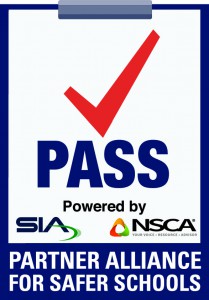
SIA, NSCA Develop School Security Guidelines
By Ronald Hawkins, Security Industry Association
A partnership between the Security Industry Association (SIA) and the National Systems Contractors Association (NSCA) has produced a unique resource for integrators who work on school security projects and their school administrator customers.
SIA and NSCA developed the Partner Alliance for Safer Schools (PASS) in 2014 from a group that SIA had created a year earlier. PASS includes representatives from not only the security industry but also schools and law enforcement, providing it with a diverse group of experts on security issues and the education environment.
At ISC West in April, PASS unveiled a document that had been in the works for the previous nine months: its “Safety and Security Guidelines for K-12 Schools.” This document includes analysis of the “case for security,” an examination of risk assessment and risk management, and, most importantly, a vendor-neutral set of guidelines for the implementation of security systems and processes, with a focus on electronic security devices.
The guidelines divide a school into nine location and technology layers, and within each layer, recommendations are listed in four tiers. So schools in which the risk level is perceived as relatively low and/or whose resources are more limited can implement the basic security measures of Tier 1, while those that face more risk and have more resources can move up the tier continuum.
“Given the wide variations among the nation’s tens of thousands of schools in terms of size, population, location and other factors, there is no such thing as a one-size-fits-all approach to security,” the guidelines state. “Whether officials at a particular school determine that meeting the standards of TIER 1 would be best for their situation, or whether they identify risk factors that compel a move to other TIERS, this guide can help to inform their decision-making and provide an appropriate level of security for students and staff.”
Since school administrators generally are not security experts, the document provides information that can help them to better understand the relevant technologies and issues, including a glossary of security terms, a list of references, and an overview of the legal aspects of securing a public facility.
All of this, combined with the section on risk, can help administrators to not only develop effective security plans and work with integrators more knowledgeably, but also to make a stronger case to their school boards for scarce budget dollars.
“As with many expenditures, budgets may force schools to phase in their solutions over several years,” the guidelines state. “The tiered approach detailed in this guide can be used to gauge and determine phased goals for mitigating identified risks. PASS realizes that deciding how to provide reasonable levels of protection for children is not just a matter of dry analysis; however, budgets are real, and unless a school has unlimited resources, difficult decisions related to how best to secure a school and its students must be made.”
PASS is now developing a set of “toolkits” that will provide more in-depth information about specific aspects of security, such as video surveillance and access control. These toolkits are expected to be released at ISC West 2016.
The guidelines, as well as more information about PASS, are available at www.passk12.org.
Ronald Hawkins (rhawkins@securityindustry.org) is manager of special projects and partnerships at the Security Industry Association.
